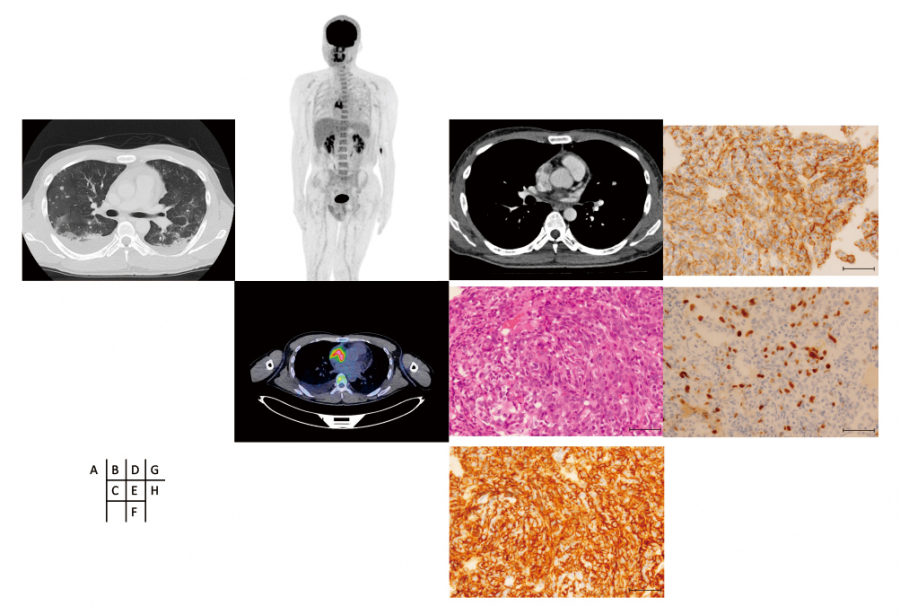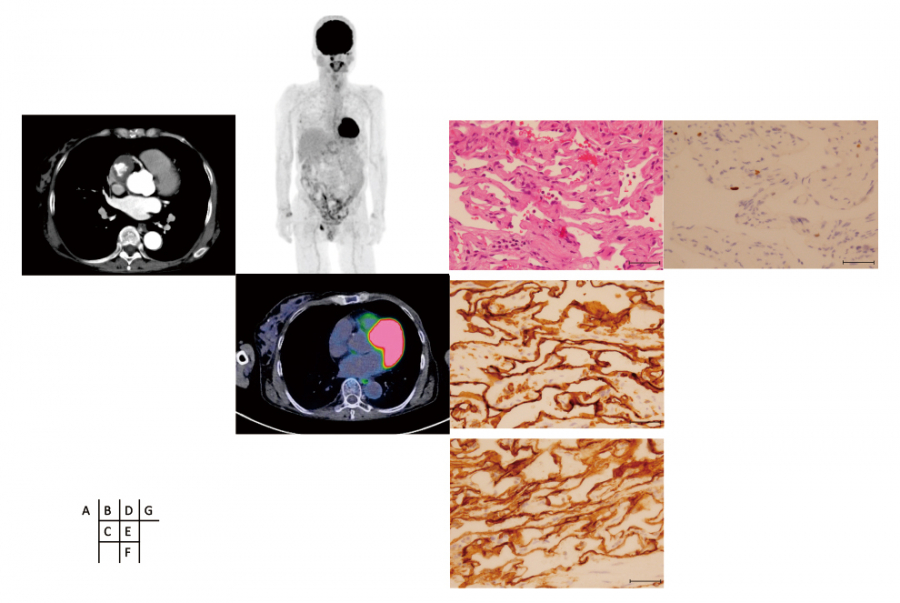Cardiac angiosarcoma is a rare malignant tumor with a poor prognosis, characterized by the high uptake of 18F-fluorodeoxyglucose (FDG). This case report presents two cases of cardiac angiosarcoma with a marked difference in FDG uptake and prognosis.
Case Summary:
Case 1: A 40-year-old male presented with syncope. Ultrasound echocardiography demonstrated a cardiac tumor with a high uptake of 18F-FDG (maximum standardized uptake value=9.2). The patient underwent heart catheterization and tumor biopsy. The pathological result was high-grade angiosarcoma, and the MIB-1(Ki-67) proliferation index was approximately 20%. Systemic chemotherapy was administered; however, the patient died 2 years and 5 months after disease onset.
Case 2: A 65-year-old female had a right atrial tumor incidentally diagnosed during routine ultrasound echocardiography. The tumor exhibited a low uptake of 18F-FDG (maximum standardized uptake value=1.8). Open heart surgery was performed, and the tumor was completely resected. Histological analysis revealed low-grade angiosarcoma, and the MIB-1(Ki-67) proliferation index was less than 5%. The patient was followed-up and had not relapsed 2 years after surgery.
Conclusion: 18F-FDG uptake may reflect pathological tumor grade and prognosis in cardiac angiosarcoma.


